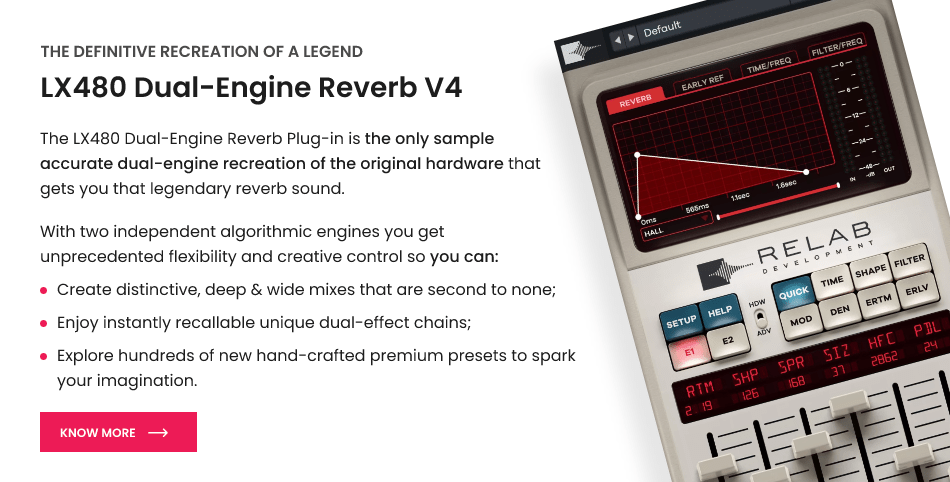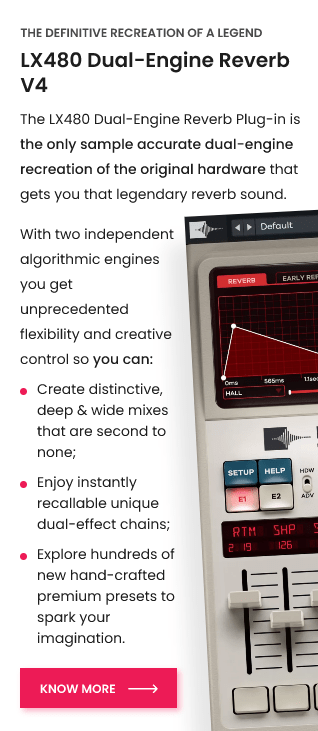In audio production, reverb is an essential tool for shaping the depth and space of a mix. While modern reverbs offer pristine sound quality and endless possibilities, there’s a certain nostalgic allure to the character of vintage reverbs from the 1970s and ’80s. With their technical limitations, quirky artifacts, and lush chorusing, these reverbs have an undeniable charm that many producers crave.
The Relab LX480, a dual-engine reverb re-creation of the legendary hardware, offers an advanced mode to recreate those vintage reverb sounds. This article will guide you through designing vintage-sounding reverb effects with the LX480, unlocking a world of nostalgic sonic textures. And if you want to see it all in action, watch the video tutorial at the end of the article.
To recreate the vintage reverb experience, we first need to understand the era’s technical limitations. Memory was expensive during the mid-1970s to mid-1980s, leading to compromises between memory, sample rate, and bit depth. Early reverbs also suffered from quirky-sounding artifacts due to memory limitations.
But fear not! The Relab LX480’s advanced mode allows you to harness those limitations and create those sought-after vintage reverb effects. We’ll use the appropriate algorithms, modulation, shape, spread, size, and frequency settings to craft our vintage sound.
Begin by choosing an algorithm leaning towards the earlier original algorithms, such as the hall and plate. The LX480’s plate room algorithm is similar to a more vintage digital plate algorithm. Then, by adjusting the chorus parameters in the modulation section, you can create a rich, vintage texture reminiscent of those classic reverbs.
Experimenting with shape, spread, and size settings will help you shape the vintage reverb character. Decreasing the shape and spread creates a flatter sound while reducing the size emulates a smaller delay line and generates more artifacts in the reverb. To achieve that nostalgic warmth, tweak the high-frequency settings in the time-frequency page, and set the input/output mode to “Main” to emulate the analog I/O of the original hardware.
For an ethereal string or pad sound that harkens back to the days of Vangelis, use the hall setting, increase the reverb time, and set the modulation to its highest value. Then, tweak the mix, shape, and spread settings to create a reverb that gels with the dry sound and conjures up the desired ethereal effect.
The Relab LX480 is a versatile tool that provides modern, high-definition reverb and allows you to tap into the nostalgic charm of vintage reverb effects. Creativity and experimentation will enable you to design unique sonic textures that transport your listeners back in time.
Now that you’ve got a taste of what the LX480 can do, it’s time to see it all come together. Be sure to watch our in-depth video tutorial, where we demonstrate how to master the art of crafting vintage reverb with the Relab LX480.
This powerful reverb plug-in is your ticket to a new world of nostalgic sound design. So dive in, and let the LX480 take your mixes on a sonic journey through time!





